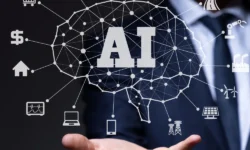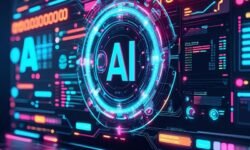AI in Smart Cities 2025: Transforming Urban Living with Intelligent Automation
The Rise of the Cognitive City: How AI is Powering the Next Generation of Smart Cities
By 2050, over 68% of the world's population will reside in urban areas, placing unprecedented strain on infrastructure, resources, and services. In response, cities worldwide are undergoing a radical transformation, evolving into intelligent ecosystems powered by Artificial Intelligence (AI) and the Internet of Things (IoT). This integration of AI in smart cities is no longer a futuristic concept but a present-day reality, driving efficiencies, enhancing sustainability, and improving the quality of life for millions of citizens.
This in-depth analysis explores the pivotal role of AI in smart cities in 2025, examining key applications from traffic management and energy grids to public safety and governance. We delve into real-world implementations, the challenges of ethical deployment, and the future trajectory of urban centers becoming cognitive, self-optimizing environments.
Revolutionizing Urban Mobility: AI-Powered Traffic Management
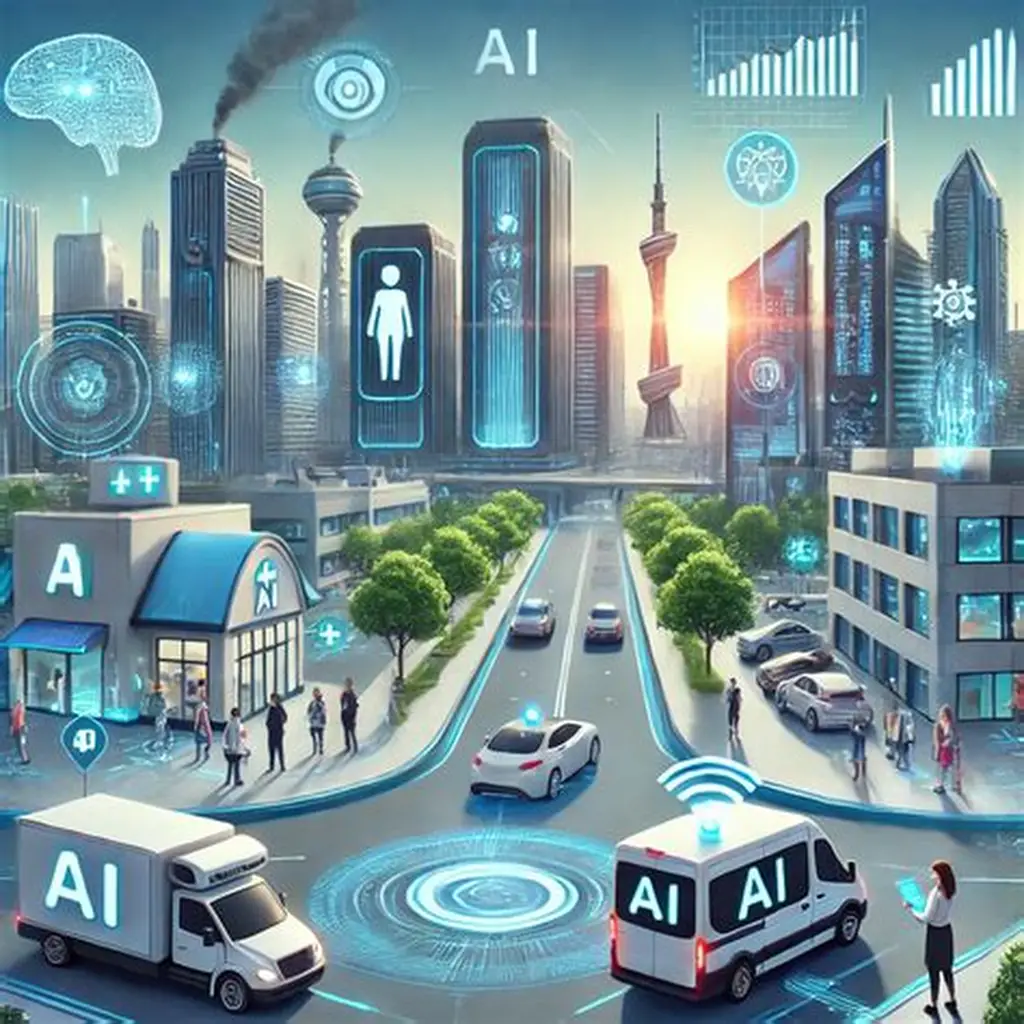
Traffic congestion is a quintessential urban challenge, costing economies billions and contributing significantly to pollution. AI in smart cities is tackling this head-on with intelligent, adaptive systems.
1. Adaptive Traffic Signal Control (ATSC)
Unlike pre-timed signals, AI-driven ATSC uses real-time data from cameras, sensors, and GPS to dynamically adjust signal timings. Companies like Siemens with their Sitraffic Concerto platform use deep reinforcement learning to optimize traffic flow, reducing average journey times by up to 25%. Explore Siemens' AI traffic solutions.
2. Predictive Congestion Modeling
AI models analyze historical and real-time data to predict congestion hotspots before they form. This allows city operators to proactively manage traffic, reroute vehicles, and inform drivers via navigation apps like Waze and Google Maps. Read the research on predictive traffic models.
3. Smart Parking Solutions
AI-powered systems guide drivers to available parking spots using sensor data, reducing the ~30% of urban traffic caused by cars searching for parking. Cities like Barcelona have implemented sensor networks that have significantly decreased congestion and emissions. Learn about Barcelona's smart parking initiatives.
Sustainable Power: Optimizing Energy Grids with AI
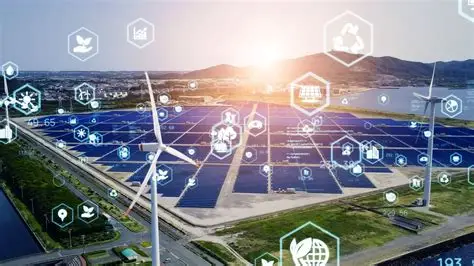
The transition to renewable energy and the electrification of transport create a complex, decentralized grid. AI in smart cities acts as the central nervous system for managing this complexity.
1. Demand Forecasting and Load Balancing
Machine learning algorithms predict energy consumption patterns down to the neighborhood level, allowing utility companies to balance supply and demand efficiently, integrate renewables seamlessly, and prevent blackouts. See how the U.S. DOE is applying AI to energy.
2. Predictive Maintenance for Infrastructure
AI analyzes data from sensors on power lines, transformers, and substations to predict equipment failures before they occur, enabling proactive maintenance and improving grid resilience. GE Digital on AI for predictive maintenance.
3. Optimization of Renewable Energy Output
For solar and wind farms, AI forecasts weather conditions to predict energy output. This allows grid operators to make informed decisions about storing or distributing energy, maximizing the use of clean power. NREL Research on AI for renewables.
A Safer Urban Experience: AI in Public Safety and Security
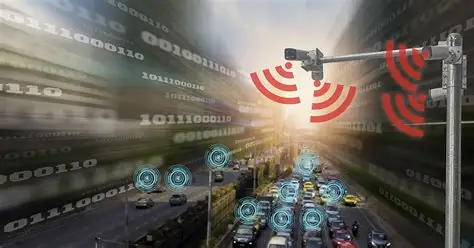
Enhancing public safety while preserving civil liberties is a critical balance for modern cities. AI in smart cities offers tools for more effective, data-driven policing and emergency response.
1. Predictive Policing and Crime Hotspot Analysis
AI algorithms analyze vast datasets—including historical crime reports, weather, time of day, and social events—to identify patterns and predict areas at higher risk of crime, enabling smarter allocation of police resources. RAND Corporation study on predictive policing.
2. Gunshot Detection and Emergency Response
Systems like ShotSpotter use acoustic sensors and AI to identify the sound of gunfire, triangulate its location, and alert authorities within seconds, drastically reducing response times. Learn about ShotSpotter's AI technology.
3. Computer Vision for Incident Detection
AI-powered cameras can automatically detect accidents, unattended bags, or falls in public areas, immediately alerting first responders. It's crucial that these systems are deployed with strict ethical guidelines to avoid bias and protect privacy. ACLU's stance on surveillance technology.
Engaging and Serving Citizens: AI in Governance and Public Services
Beyond infrastructure, AI in smart cities is revolutionizing how municipal governments interact with and serve their residents, making bureaucracy more efficient and responsive.
1. AI-Powered Chatbots and Virtual Assistants
Cities deploy AI chatbots to handle routine citizen inquiries 24/7—from reporting potholes and applying for permits to answering tax questions. This frees up human employees for complex tasks and improves citizen satisfaction. OECD case study on AI citizen assistance.
2. Predictive Analytics for Urban Planning
Planners use AI to simulate the impact of new policies, zoning changes, or construction projects on traffic, housing prices, and community resources, leading to more informed and democratic decision-making. UN World Urbanization Prospects report.
3. Automated Waste Management
Smart waste bins equipped with sensors signal when they are full, allowing sanitation departments to optimize collection routes. AI-powered robots are even being used in recycling plants to sort materials more accurately than humans. Waste360 on AI in recycling.
Navigating the Urban Maze: Challenges and Ethical Considerations
The integration of AI in smart cities is not without significant hurdles. Addressing these challenges is paramount to building equitable and trustworthy urban environments.
1. Data Privacy and Surveillance
The vast amount of data collected by sensors and cameras raises serious privacy concerns. Cities must implement robust data governance frameworks, ensure transparency, and give citizens control over their information. The EU's GDPR regulation is a leading example of such a framework.
2. Algorithmic Bias and Fairness
AI systems trained on biased data can perpetuate and even amplify existing societal inequalities, particularly in areas like predictive policing or access to services. Continuous auditing for bias is essential. The Algorithmic Justice League advocates for equity in AI.
3. Digital Divide and Accessibility
Smart city benefits must be accessible to all residents, not just the technologically affluent. Cities must work to bridge the digital divide and ensure that AI-driven services are inclusive. ITU's Digital Inclusion initiative.
4. Cybersecurity Vulnerabilities
A connected city is a potential target for cyberattacks. Securing critical infrastructure—from power grids to traffic lights—against malicious actors is a top priority. CISA on critical infrastructure security.
The Future of AI in Smart Cities: Towards Cognitive Urban Ecosystems
The evolution of AI in smart cities is moving towards fully integrated, cognitive environments where systems learn, adapt, and act autonomously for the collective good.
1. The Rise of Urban Digital Twins
Cities are creating virtual replicas of themselves—digital twins—powered by AI and fed by real-time IoT data. These models allow for unprecedented simulation and testing of policies, disaster response plans, and infrastructure projects in a risk-free environment. Digital Twin Consortium.
2. Autonomous Vehicle Integration
As self-driving cars become mainstream, AI will manage their interaction with the city's infrastructure, coordinating traffic flow, prioritizing public transport, and eliminating accidents caused by human error. McKinsey on autonomous vehicles.
3. AI for Climate Resilience
AI will be critical in helping cities adapt to climate change, from predicting flood paths and managing water resources to optimizing energy consumption during heatwaves and monitoring air quality in real-time. World Resources Institute - Cities.
Conclusion: Building People-Centric Smart Cities with AI
The integration of AI in smart cities represents a paradigm shift in urban management. From streamlining traffic and conserving energy to enhancing public safety and improving citizen engagement, AI is the cornerstone of more sustainable, efficient, and livable cities.
However, technology alone is not the answer. The true success of a smart city lies in its ability to leverage AI not for its own sake, but to serve the needs and well-being of its citizens. This requires a steadfast commitment to ethical principles—prioritizing privacy, ensuring equity, fostering transparency, and maintaining robust public discourse.
The cities that will thrive in the 21st century are those that harness the power of artificial intelligence not to create automated cities, but to build augmented cities—where human wisdom and machine intelligence collaborate to create a superior urban experience for all.

